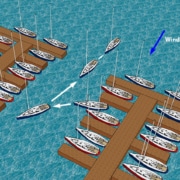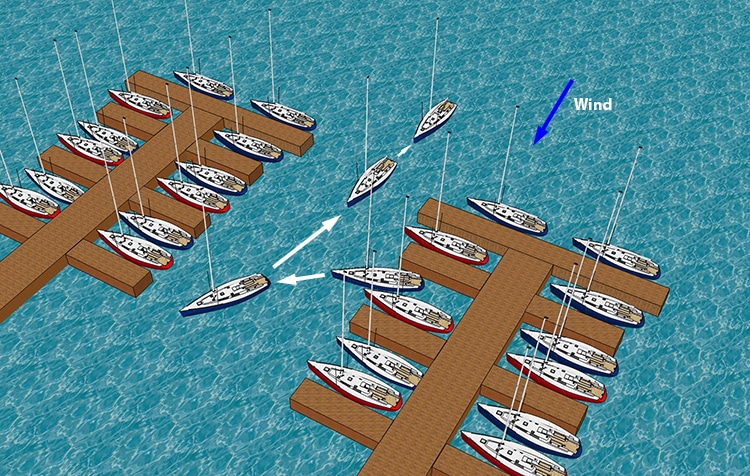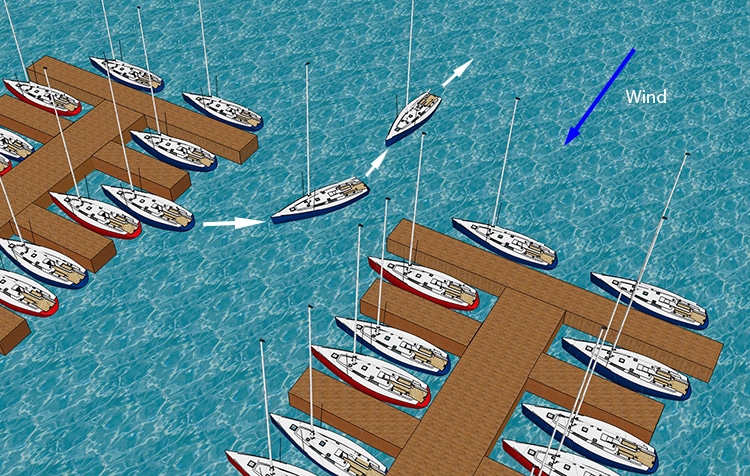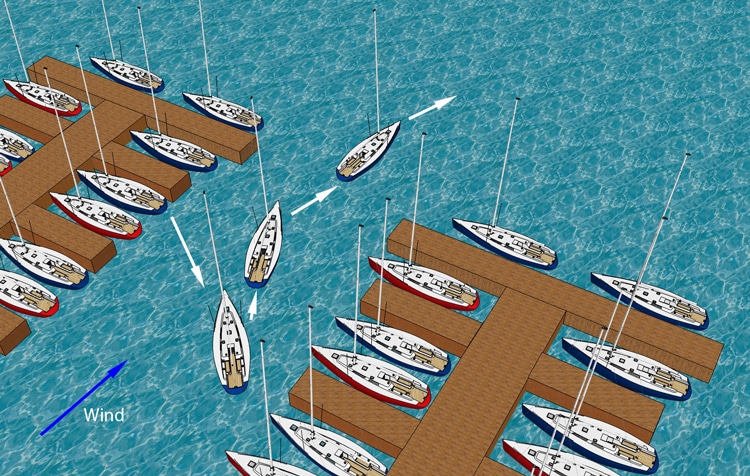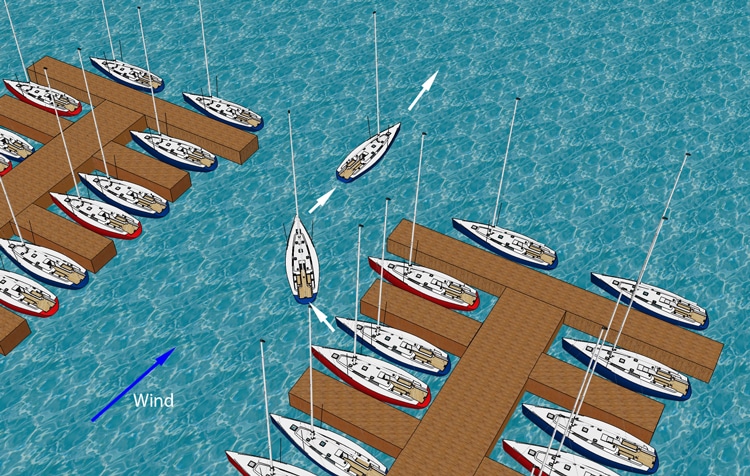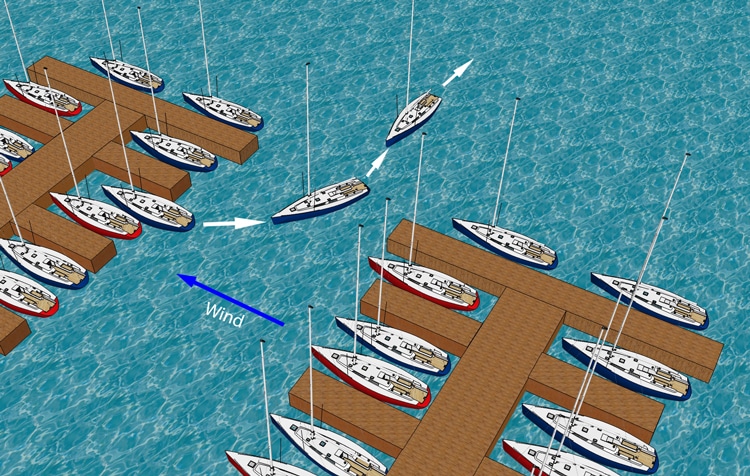Leaving the Slip with a Sailboat
Wind coming into the slip channel and your boat is stern-to
This is best handled by steering out of the slip and then immediately downwind. Back out of the slip channel and well into the main channel before engaging forward.
Wind blowing into the slip channel and your boat is bow-to
Simply back out of the slip into the slip channel and then into the main channel. You may need a bow line to the windward dock to prevent the bow from blowing downwind as you engage reverse.
Alternatively, in stronger wind, you may not be able to prevent your stern from being blown downwind. In this case, you could allow the stern to blow downwind while you have a bow line to the windward dock as the boat comes out of the slip. It is imperative, however, that the bowperson be instructed when to release the bow line. Think about which way propwalk will take your stern.
Wind blowing out of the slip channel and your boat is bow-to
Back out into the wind, then engage forward. Watch for traffic as you enter the main channel. In higher winds, you may need to use some lines to assist. Once you are out of the slip and in the slipway, your bow will blow down allowing you to just drive out.
Wind blowing out of the slip channel and your boat is stern-to
Simply drive the boat out to the main channel.
The wind blows across the docks and your boat is stern-to
Again, simply drive the boat out to the main channel. If the slipway is narrow, go slow, wait until the stern is clear then bring the wheel full over and apply a burst wash of prop thrust of the rudder to quickly turn the boat.
The wind blows across the dock and your boat is bow-to
Simply reverse the boat out of the slip, into the slip channel, and then into the main channel. If the wind is light you may elect to turn the boat in the slip channel and come out in forward gear. However, if the wind is strong it’s safer to follow the above diagram.
Other wind/current configurations are solved using variations of the above techniques.
A note about current: Water is 800 times denser than air so a 1/2 knot to even 1 knot current can push your boat around very inconveniently. Being an expert with docking in current needs experience. But also being knowledgeable about how the boat gets pushed with current and how to use spring lines to take advantage of the forces and moments as shown in the previous module is extremely valuable.


